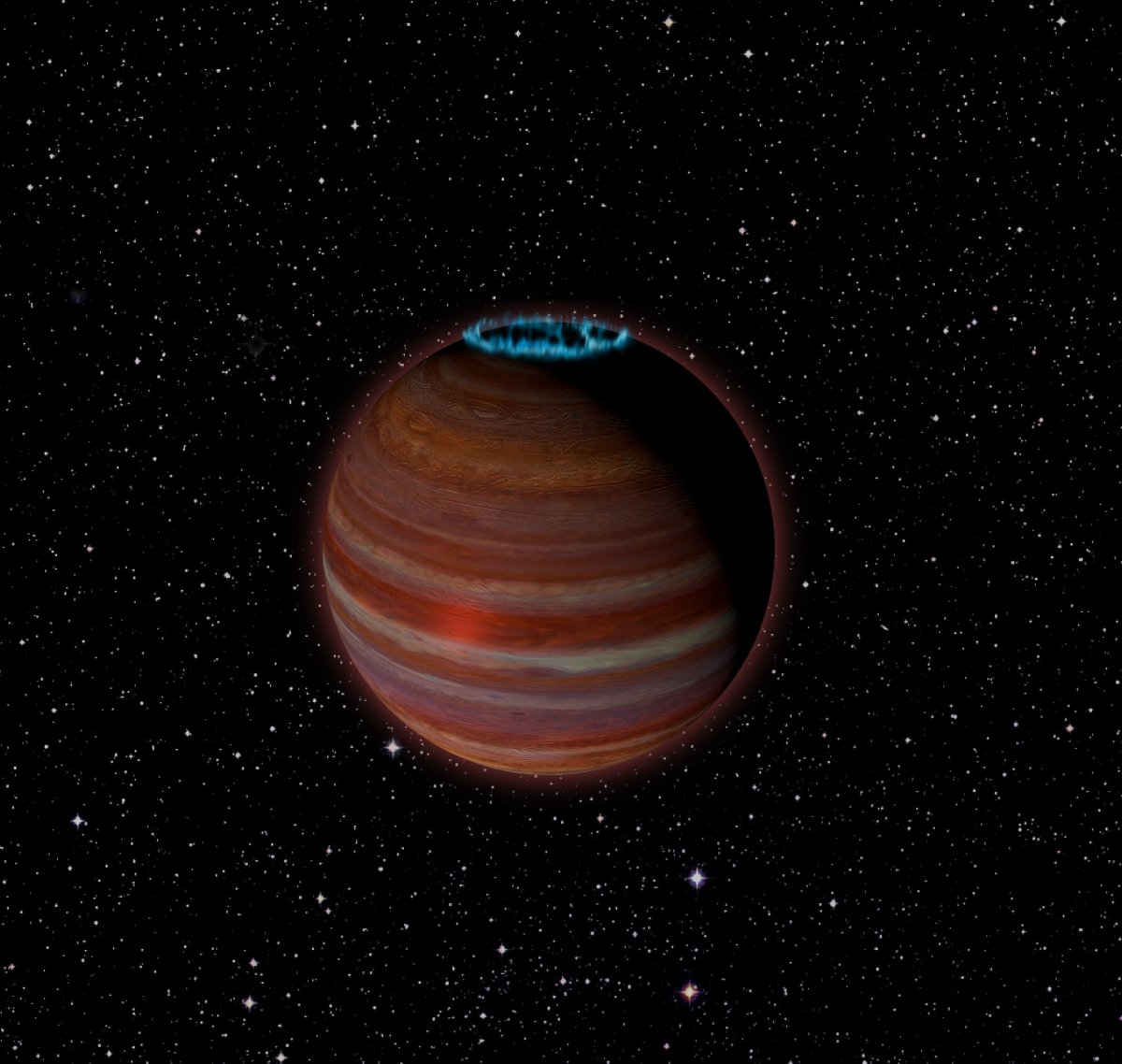Using a radio telescope, scientists have detected what could be a huge planet nudging our solar system. About 12 times as massive as Jupiter, this rogue celestial body is floating through space without its own host star.
What's more, the observations shed light on the object's powerful magnetic field and the glowing auroras it produces. Scientists reported their research in The Astrophysical Journal.
Astronomers think the mysterious, 200-million-year-old free-floating object is cruising just 20 light-years from Earth. It's pretty hot, with a surface temperature of more than 1,500 degrees Fahrenheit. It's known as SIMP J01365663+0933473—or SIMP for short.

It's "right at the boundary between a planet and a brown dwarf, or 'failed star,'" explained study author Melodie Kao in a statement. "This object…is giving us some surprises that can potentially help us understand magnetic processes on both stars and planets."
Kao led the research while studying at the California Institute of Technology. Now, she's a Hubble Postdoctoral Fellow at Arizona State University. Kao and her team used the National Science Foundation's Karl G. Jansky Very Large Array to probe the planet's radio emissions.
Researchers previously thought SIMP was a brown dwarf. But subsequent observations showed it was just about small enough to be a planet, 12.7 times more massive than Jupiter and with a radius 1.22 times that of our gassy neighbor.
Brown dwarfs are too massive to count as planets but don't have the mass required to harbor the hydrogen fusion reactions that power stars. They're normally considered to be about 13 times the mass of Jupiter or greater.
The new radio observations probed SIMP's magnetic field, which astronomers think is about 200 times more powerfu than Jupiter's. Like our own planet, SIMP has auroras.
On Earth, these beautiful dancing lights in the sky are created by the interactions of our planet's magnetic field and a barrage of particle-filled wind from the sun. But SIMP has no sun to pummel it with particles. Instead, scientists think the strange object's auroras are driven by an orbiting planet or a moon.
Gregg Hallinan of Caltech said the research "presents huge challenges to our understanding of the dynamo mechanism that produces the magnetic fields in brown dwarfs and exoplanets and helps drive the auroras we see."
Focusing on auroral radio emissions, he added, could offer a new way to hunt previously undetected planets.
Uncommon Knowledge
Newsweek is committed to challenging conventional wisdom and finding connections in the search for common ground.
Newsweek is committed to challenging conventional wisdom and finding connections in the search for common ground.
About the writer
Katherine Hignett is a reporter based in London. She currently covers current affairs, health and science. Prior to joining Newsweek ... Read more
To read how Newsweek uses AI as a newsroom tool, Click here.








